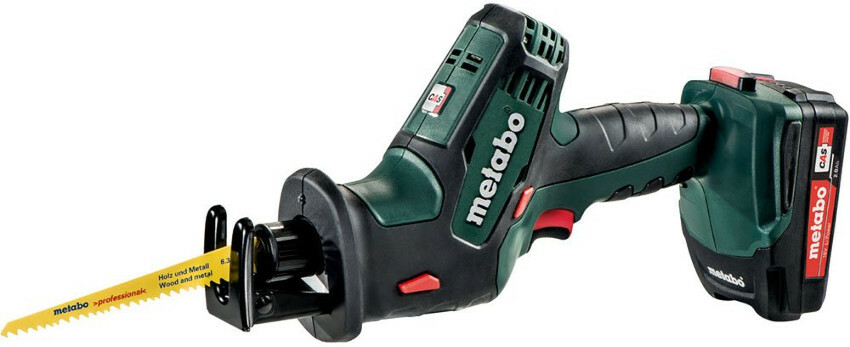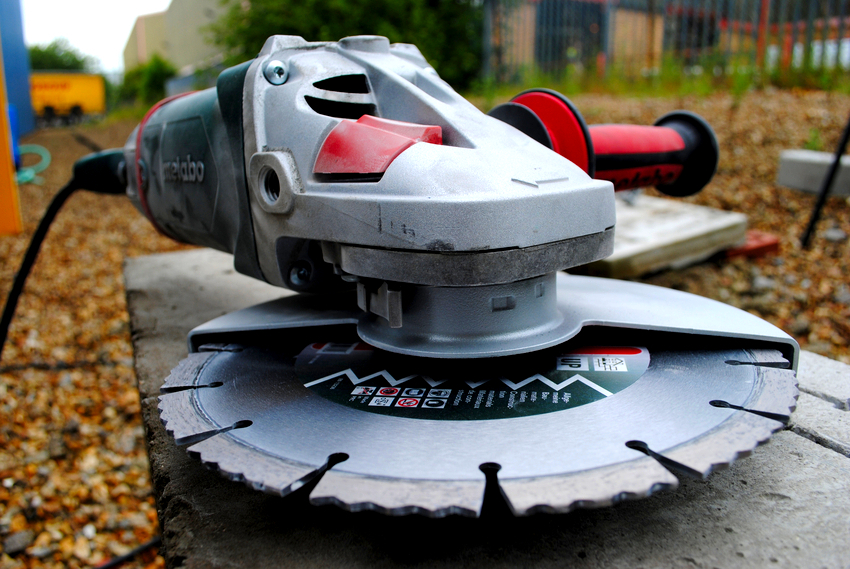Contents
- 1 Types of saw
- 2 How to use the saw
 What are the tools for sawing and cutting materials
What are the tools for sawing and cutting materials The purpose of the saw tool
The saws are designed for sawing metals and wood materials. The saw has a metal band( disk) with teeth. A step is the distance between the tips of two adjacent teeth, the height of the tooth is the gap between the base and the top of the tooth. The saw teeth have 2 side and 1 front cutting edges. The saw teeth are designed in the form of a triangle designed for longitudinal sawing of saw-timbers and have a straight sharpening, thanks to which it is possible to cut only in one direction. The front cutting edge of such a saw cuts the fibers, and the two lateral edges separate them from each other.
The teeth for the saw saw are mainly made in the form of an isosceles triangle and have a two-sided sharpening. At such a saw, the front grinding separates the fibers, and the lateral edges cut them.
Types of saws
There are manual, electric and filing saws. Electric are designed for both transverse and longitudinal sawing of materials, in particular boards, bars. In addition, with their help you can perform some types of carpentry, such as sawing at a certain angle. The convenience of these saws is that working with them does not require significant time and physical costs. Widely used such electric saws as EP-5KM, EP-K6, K-5M, IE-5107.Saws EP-5KM, EP-K6, K-5M are needed for sawing uncut timber, boards, logs, beams. Cutting part of saws - a chain consisting of joints fastened together by hinges of teeth. In the process of working with such electric saws it is necessary to strictly follow the safety rules:
it is not allowed to work with a saw in a high humidity room at a voltage higher than 36 V;
to move the saw, it should be placed in a cover;
, after completion of the work, the saw must be removed in a specially designated place for it, for example in a cabinet.
The saw of IE-5107 due to high speed( 49 s-1) can saw wood materials having a thickness of 65 mm. It is also possible to use it as a stationary machine with a pre-installation on a workbench. In order to maximally secure the work with the saw, it is necessary to check how correctly its teeth are sharpened and ground, how the disc is seated on the spindle, whether it has cracks or other damage. Check the condition of the gearbox by turning the dial. In the event that the rotation of the disc is difficult, dilute the lubricant, for 60 seconds including idling the tool.
How to use the saw
After all faults have been eliminated, the left hand grasp the front handle and the right hand grip the rear handle, and install the saw blade on the material previously secured to the workbench. The saw must be guided strictly along the intended line, without sharp jerks, smoothly, as the tool disc may jam, causing sudden and rapid movements, provoking a breakdown of the electric motor.
Provided that if the disk is still jammed and it has stopped, the electric saw is retracted a little, helping to free the disk and the set of necessary rotation speed, and then sawing is continued. If the disc does not gain the required rotation speed, the saw operation is stopped. After the sawing is finished, the saw is switched off, wiped with a rag soaked in kerosene and cleaned for storage.

Allocate hacksaws( hacksaws), transverse and sideways. The former are used for cutting small rods.
The usual manual hacksaw has two( right and left half frames), joined by a clip. The handle is on the side of the right half frame. The saw blade is placed in the gap of the rod and tension screw, and then fixed with a pin. Then the cloth of the tool is stretched with a lamb.
The saw blade can have a length of 320 and 370 mm. The width of the hacksaw is 15 mm, and the thickness is a maximum of 0.75 mm. The height of the profile of the hacksaw is 55-60 mm. The choice of the number of teeth at the saw blade is determined by working with a certain metal. In particular, canvases with 16 teeth are suitable only for working with soft metals, webs having 19 teeth are used for products made of hard metals, and webs with 22 teeth are designed to work with superhard metals.
To cut a rod with a hacksaw, it should be placed in a vise and clamped so that the cut line is located next to the jaws of the vice. When cutting a part having a large width, the position of the hacksaw is horizontal. In the event that cutting parts from strip or corner steel, the position of the hacksaw is inclined.
To achieve the optimum result per minute, you need to perform 40-50 movements with a hacksaw. When the tool moves forward, pressing is carried out, there is no pressure when moving backwards. The force of pressure is determined by the properties of the metal with which work is being done. In particular, the pressing force when cutting soft metals should be significantly less than when cutting hard metal products. In the process of working with a hand hacksaw, in order to prevent the tool blade from cracking and injuring the hand, sudden movements accompanied by significant pressure should be avoided. In addition to manual hacksaws, electric ones are also used. When working with such a hacksaw, it is periodically necessary to wet the tool web with a liquid emulsion to avoid overheating.
Cross-cut saws are designed for cross cutting and carpentry work. The teeth of the saw resemble an isosceles triangle and have an oblique sharpening. The angle at the apex of the tooth is usually 42-45 °.The saw blades can have a thickness of 1.1 and 1.4 mm.
circular saws consist of a hardwood beech made of hardwood, a canvas having a length of 785-800 mm, as well as a string made of a 3-4 mm thick twisted hemp or linen cord. They can be longitudinal and transverse. In transverse beam saws, the width of the blade is 22-25 mm, the angle of sharpening is 70-79 °, and the distance between the teeth is 4.5-5 mm. In longitudinal beam saws, the web has a width of 50-55 mm, a thickness of 0.5-0.7 mm, a tooth spacing of 5 mm, and a sharpening angle of 45-50 °.
The saws are used for sawing a material along a curve. The blade of these saws has a length of 500 mm, a width of 5-15 mm, the distance between the teeth is 5 mm, and the angle of sharpening is 55-60 °.Sharpening of the saw teeth is straight.
In order to reduce the friction force, which can cause the tool web to get stuck in the cut, the teeth are bred. The cloth for this should be placed in a vice and clamped. Then you need to take the universal wiring and bend the tops of the teeth from the base at least 2/3 of their height. Even teeth are diverted to one side, and odd ones to the other.
For the work with hardwood, the teeth of the saw are bred 0.25-0.5 mm. If necessary, saw the materials from softwoods, the teeth of the saw are 1 mm diluted. To verify the correctness of the divorce, apply the template.
To ensure that the bowstring does not stretch for a long time, after the work has been completed with the saw, the twist should be released slightly.
Apartment renovation in the home.


